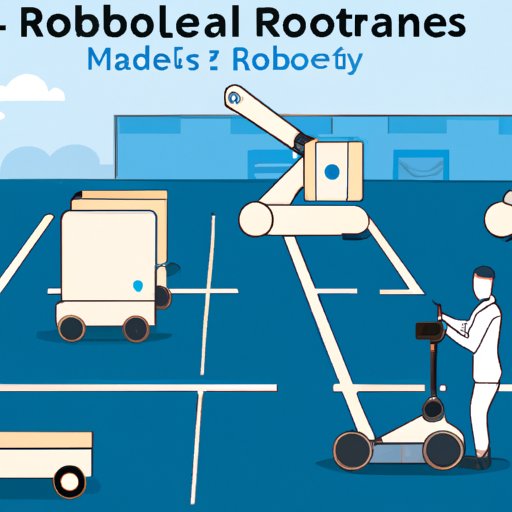Introduction: What are Autonomous Mobile Robots?
Autonomous mobile robots (AMRs) are robots that can move and operate independently without the need for human intervention. They use sensors, cameras, and other technologies to navigate their environment and perform tasks. AMRs are becoming increasingly popular in many industries due to their flexibility and cost-effectiveness compared to traditional automation solutions. From logistics to healthcare and manufacturing, these robots offer a range of advantages that could revolutionize the way we work.

Overview of Autonomous Mobile Robots
Autonomous mobile robots have a wide range of applications across different industries. Here are some of the ways they’re being used today:
Benefits of Autonomous Mobile Robots
AMRs offer several advantages over traditional automation solutions. One of the biggest benefits is their ability to quickly adapt to changing conditions. This means they can be used in dynamic environments where manual labor isn’t feasible. Additionally, AMRs don’t require extensive training or programming, making them easier to deploy than traditional automation solutions. Finally, AMRs are typically less expensive than traditional automation solutions, making them a more cost-effective option.

How Autonomous Mobile Robots are Changing the Future of Logistics
Logistics is one of the biggest areas where AMRs are having an impact. These robots can be used to transport goods around warehouses and factories, helping companies reduce costs and increase efficiency. They can also be used to deliver products to customers, cutting down on delivery times and providing a better customer experience. With the rising demand for faster delivery times, AMRs are becoming an integral part of the logistics industry.
The Role of Autonomous Mobile Robots in Healthcare
AMRs are also being used in healthcare to help with a variety of tasks. For example, they can be used to transport medical supplies, equipment, and medications throughout a hospital. They can also be used to monitor patient vitals and alert staff when something is out of the ordinary. Additionally, AMRs can be used to automate mundane tasks, freeing up medical staff to focus on more important tasks.

The Impact of Autonomous Mobile Robots on Manufacturing
Manufacturing is another area where AMRs are becoming increasingly important. These robots can be used to automate tedious and repetitive tasks, reducing labor costs and increasing efficiency. Additionally, AMRs can be used to inspect products and components, ensuring quality control and reducing costly mistakes. Finally, AMRs can be used to transport materials, components, and finished products throughout a factory, helping to streamline production processes.
Exploring the Security and Safety Implications of Autonomous Mobile Robots
As with any new technology, there are security and safety implications to consider when implementing autonomous mobile robots. Companies should ensure that their robots are properly secured and that they have protocols in place to prevent unauthorized access. Additionally, companies should ensure that their robots are properly maintained and that they are equipped with the necessary safety features. Finally, companies should ensure that their robots are programmed to follow safety protocols and that they are trained to recognize potential hazards.

Autonomous Mobile Robotics: A Look at the Current Market Landscape
The global autonomous mobile robotics market is expected to grow significantly over the next few years, with analysts predicting a compound annual growth rate of over 30%. This growth is driven by increasing demand for cost-effective automation solutions and the growing adoption of AMRs in various industries. The logistics sector is expected to be the biggest driver of growth, followed by healthcare, manufacturing, and retail.
Conclusion
Autonomous mobile robots are becoming increasingly popular in many industries due to their flexibility and cost-effectiveness compared to traditional automation solutions. From logistics to healthcare and manufacturing, these robots offer a range of advantages that could revolutionize the way we work. The global autonomous mobile robotics market is expected to grow significantly over the next few years, driven by increasing demand for cost-effective automation solutions and the growing adoption of AMRs in various industries.
(Note: Is this article not meeting your expectations? Do you have knowledge or insights to share? Unlock new opportunities and expand your reach by joining our authors team. Click Registration to join us and share your expertise with our readers.)
